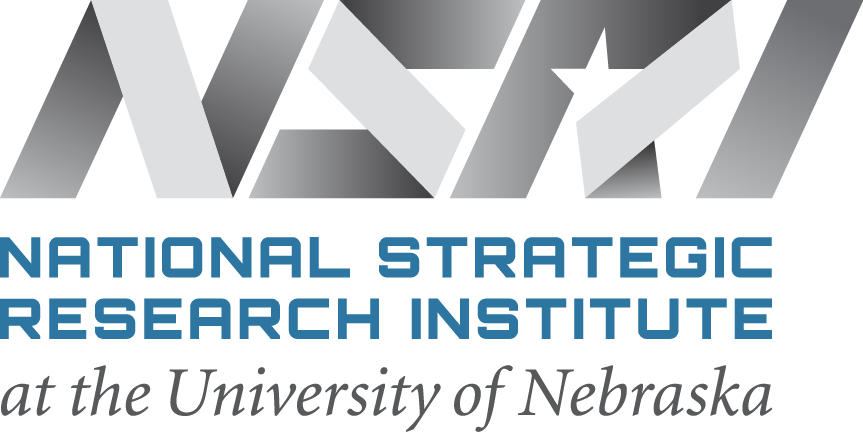
Growing up in Ravenna, Neb., Eric Markvicka helped out on his grandparent’s farm. For farmers, equipment breaking and needing repair or replacement is the norm — and fixing them a fascinating challenge for a technically minded child.
"I was always interested in working with my hands, even as a small child,” he said. “On the farm, something is always breaking down. You learn fast that you must be creative and work with the equipment and parts you have, not be frustrated by it, as you rarely have time to wait for a replacement to arrive."
His exposure to agricultural machinery and technology sparked an interest in engineering and a desire to create a future where humans and technology work together more intimately.
In high school, he heard fellow Ravenna native Dr. Shane Farritor’s presentation on surgical robotics and was inspired to study robotics in medicine. After graduation, he worked with Farritor, a professor of mechanical and materials engineering, while pursuing both his undergraduate and master’s degrees at the University of Nebraska–Lincoln (UNL).
From there, the now Dr. Markvicka went on to earn his doctorate degree in robotics from Carnegie Mellon University, where he worked on a soft robotics program that inspired the Disney film, Big Hero 6, which prominently features an inflatable robot that serves as a health care companion.
"It was one of the first movies where the robot was not trying to kill the humans,” he said.
In days past, he explained, humans envisioned a future where robots are part of everyday American life. In TV shows like The Jetsons, a robot maid performed menial labor around the home, allowing the family to spend time relaxing or pursuing hobbies. Many advancements have been made in the world of robotics, he said, but most existing robots operate behind a “fence,” clearly separated from our everyday lives.
"The sharp corners and hard, inflexible materials that make up most robots are at odds with our surroundings,” he said. “As a result, we’ve been unable to integrate robots into our homes the way we once envisioned."
Dr. Markvicka hopes research at UNL’s smart materials and robotics laboratory, which he directs, will help bridge that gap by making technology soft and flexible and integrating it better with people.
And by "people," in one of his current projects, Dr. Markvicka means "soldiers."
Dr. Markvicka is the pillar of a team funded by the National Strategic Research Institute (NSRI) at the University of Nebraska to introduce several early generations of a sensitive surveillance system in the form of a wearable electronic nose. The nose would enable continuous monitoring and localization of air-borne chemical vapors, which is critically important to mitigate the effects of environmental and chemical weapons of mass destruction.
Current environmental monitors typically consist of bulky, intrusive stationary or portable systems that can’t be worn comfortably on the body during daily activities. The new electronic nose extends the reach and flexibility of existing monitors by transforming each person in a monitored area into a ‘probe’ of potential threats. This provides more and better data, so decision-makers can get detailed, real-time information to determine threat status.
Dr. Markvicka is joined on the project by Dr. Stephen Rennard, professor of pulmonary research at the University of Nebraska Medical Center, and Dr. Jenna Yentes, associate professor of health and kinesiology at Texas A&M University. The funding comes through NSRI’s independent research and development program.
"Each one of us brings something unique to the collaboration," Dr. Yentes said. "Eric brings the device, I bring the analysis and Steve brings the application. I see us as a three-legged stool, each person being pivotal. With that being said, Eric is the backbone. Without the devices, we don’t have a project."
Dr. Markvicka’s vision of a future where humans and technology are more entwined is no pipe dream — his work is proving that. If we change the way we think about the materials the technology is made of, he said we can find new ways to integrate them into our lives seamlessly.
"In scientific collaboration, you have to have the ability to see other people’s problems,” Dr. Rennard said. “Eric is open-minded and energetically learns things outside of his expertise."
Thanks to that energy, passion, dedication and open-mindedness, the young farm fixer has become a world-class robotics innovator.
###
About the National Strategic Research Institute
Through the National Strategic Research Institute at the University of Nebraska leading scientists deliver innovative national security research, technology, product and strategy development, training and exercises, and subject matter expertise to the Department of Defense and other federal agencies. One of only 14 DOD-designated University Affiliated Research Centers in the country, NSRI is sponsored by U.S. Strategic Command and works to ensure the United States’ safety and preparedness against increasingly sophisticated threats. Read about our mission.

